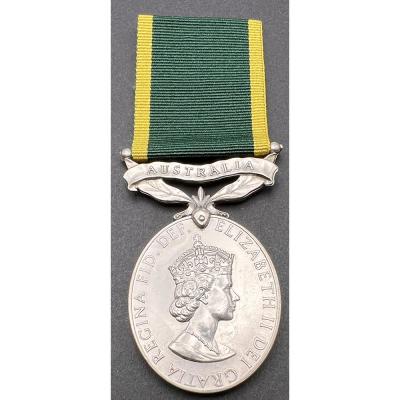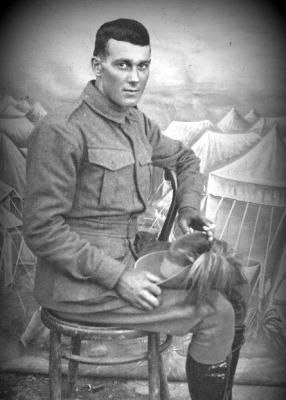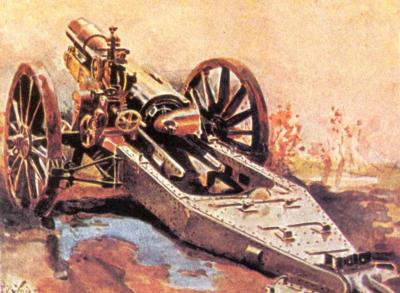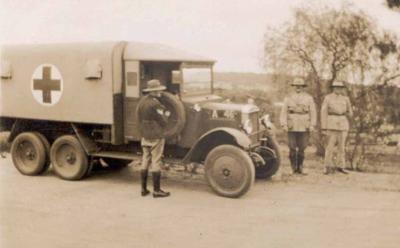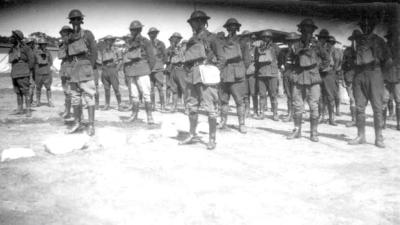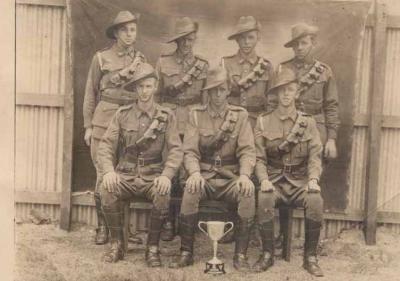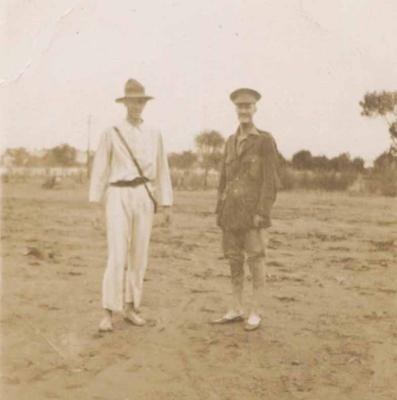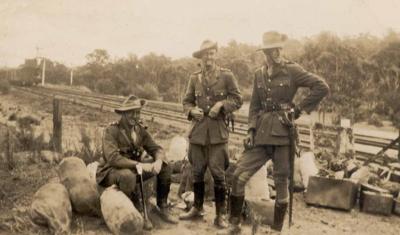Medal - Efficiency Decoration
The Efficiency Decoration was a long service award for part-time officers of the Australian Citizen Military Force or equivalent. It superseded the Volunteer Officers' Decoration and the Colonial Auxiliary Forces Officers' Decoration. The decoration is an oval skeletal design and was struck in silver, with parts of the obverse in silver-gilt. The original badge is the same as that of the King George V version of the Territorial Decoration, 43 millimetres high and 35.5 millimetres wide, but with the decoration's subsidiary title inscribed on the bar-brooch. The subsequent King George V, King George VI and Queen Elizabeth II versions are of a new design, 54 millimetres high and 37 millimetres wide, with a 15 millimetres diameter ring suspender, formed of silver wire, which passes through a small ring affixed to the top back of the crown.
The obverse is an oval oak leaf wreath in silver, tied with gold, with the Royal Cypher of the reigning monarch in the centre below the Royal Crown, both in gold. Four versions of the decoration have been awarded to Australians George V, George VI (King/Emperor and King) and Elizabeth II.
The clasps have either the Royal Cypher of King George VI (GVIR) or Queen Elizabeth II (EIIR) in the centre, surmounted by the Royal Crown, with the year of the award impressed on the reverse.
The Efficiency Decoration was instituted by Royal Warrant on 23 September 1930 as a long service award for part-time officers of the Territorial Army of the United Kingdom and of the Auxiliary Military Forces of the British Dominions, Colonies and Protectorates and India. It superseded the Volunteer Officers' Decoration, the Colonial Auxiliary Forces Officers' Decoration and the Territorial Decoration.
The decoration could be awarded to part-time officers after twenty years of commissioned service, not necessarily continuous, as an efficient and thoroughly capable officer on the active list of the Territorial Army or of any other Auxiliary Military Force of the British Empire. Half of the time served in the ranks could be reckoned as qualifying service for the decoration.
The award is the officer equivalent of the Efficiency Medal.In Australia, the Efficiency Decoration (Australia) was superseded by the Reserve Force Decoration on 20 April 1982.
Details
Details
From the beginning many military awards for both bravery and long service had distinctions based on class, rank or responsibility. Awards could be issued in different medals, gold, silver or bronze. Their could be a Cross for officers and a medal for other ranks for example Military Cross and Military medal. For long service, officers received a Decoration, soldiers a Medal. Contemporary practice has been to remove rank restrictions for bravery awards while retaining options for the circumstancesof the action. Recognition for exceptional service such as the Oder of Australia retains criteria for the level of service being commended. In general long service medals have no rank distinction only years of service.
In contrast to the previous policies for medals, sacrifice was traditionally been recognised as equally honoured. Rank distinctions are not normally found on Memorials and Honour Boards, the Australian War memorial being a national example.
Medals are displayed in context throughout the Museum. All medals are identified, archivally stored and those not on display are accessible and viewable with prior notice.
Australian Army Museum of Western Australia
Australian Army Museum of Western Australia
Other items from Australian Army Museum of Western Australia
- Medal - Efficiency Medal
- Medal - Centenary Medal
- Medal - Civilian Service Medal 1939-45
- World War 1, Australia, Western Australia, 454 NELSON, 10 Light Horse
- World War 1, Australia, Western Australia, 3952 TEEDE, 10 Light Horse
- World War 1, Western Front, France, 6inch BL Howitzer
- Inter War, Western Australia, Rockingham, 3 Field Artillery Brigade, 1938
- World War 2, Western Australia, Melville, 3 Field Artillery Regiment, Gas Traaining, , 1939
- Inter War, Western Australia, Perth, 103 Howitzer Battery, 1938
- Inter War, Western Australia, Northam, 3 Field Artillery Brigade, 1938
- Inter War, Western Australia, Northan, FITZHARDINGE, MONTIPORE, Northam, 1938
- Inter War, Western Australia, Clackline, FITZHARDINGE, MONTIPOTR, CLIFTON, 103 Howitzer Battery

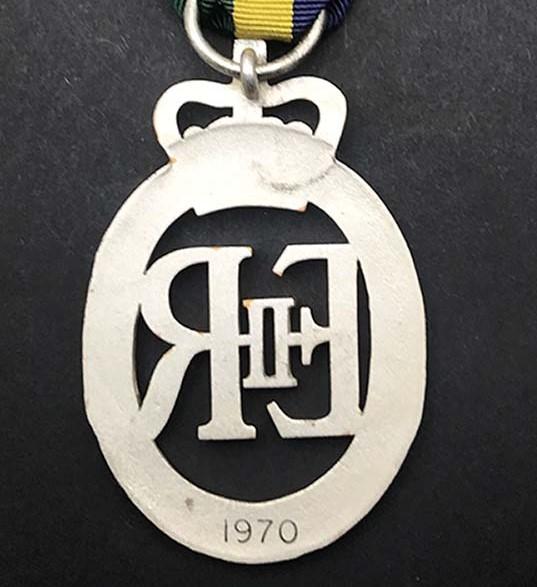
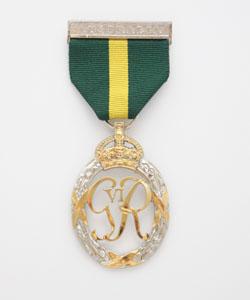
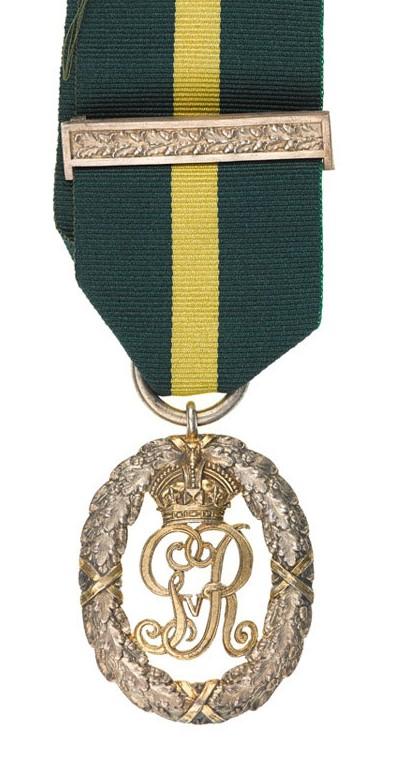
Scan this QR code to open this page on your phone ->

